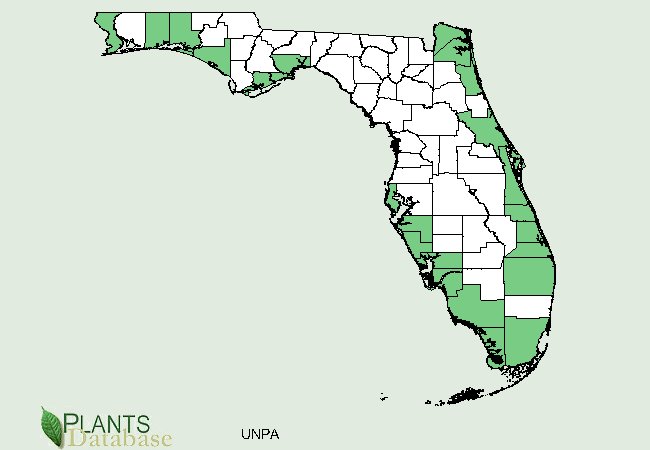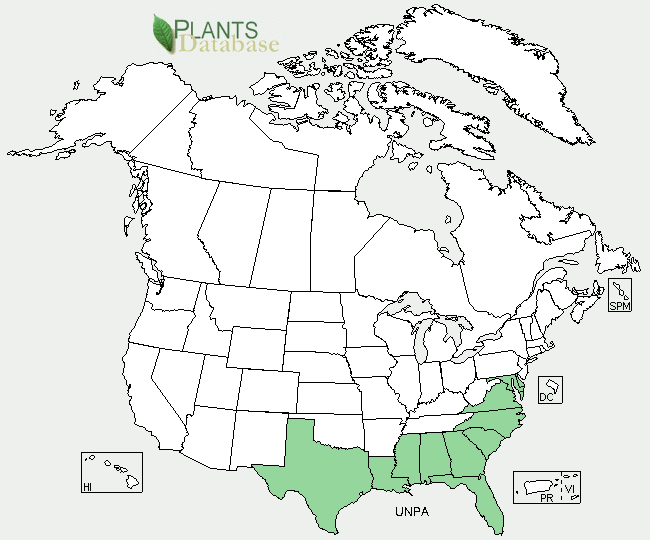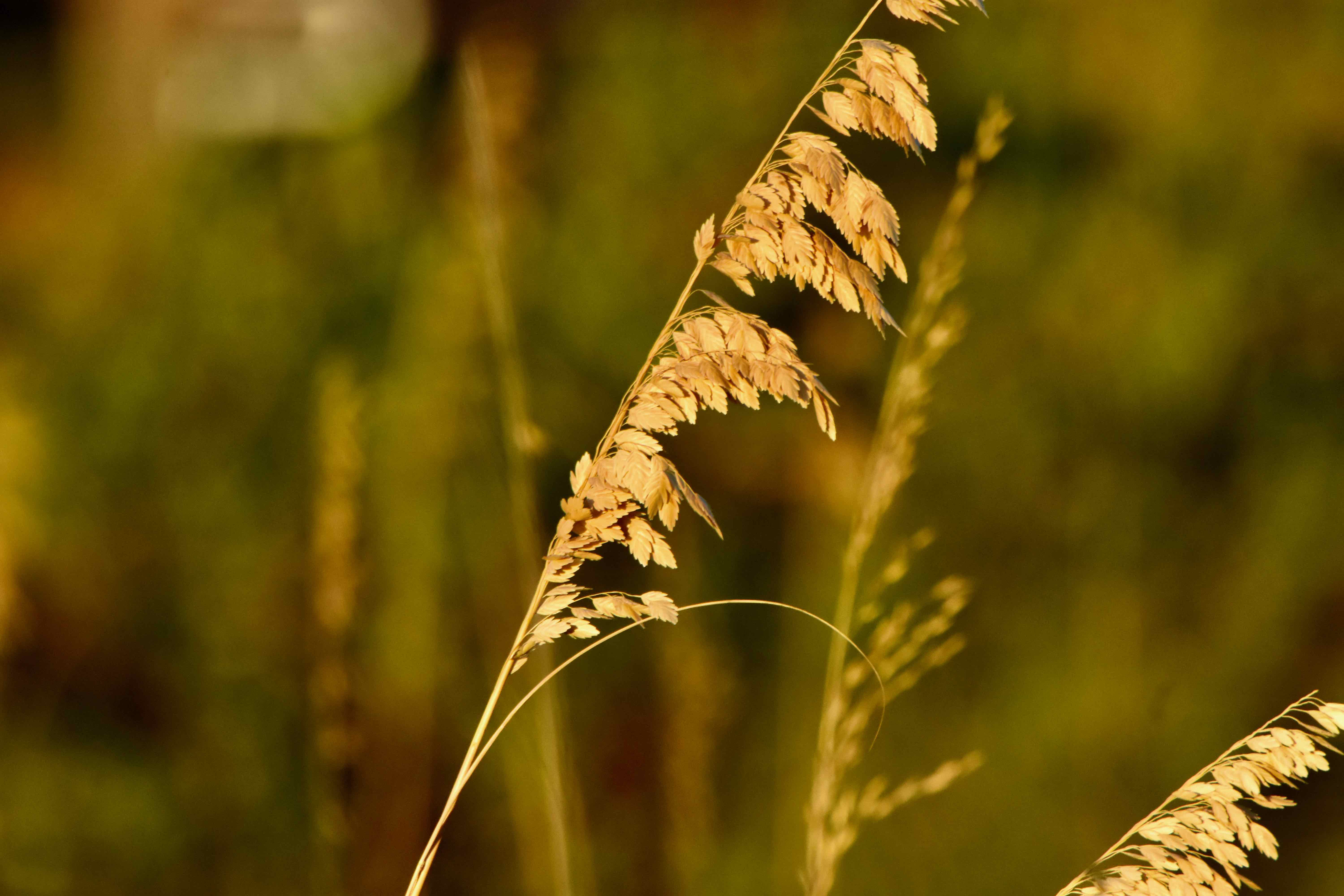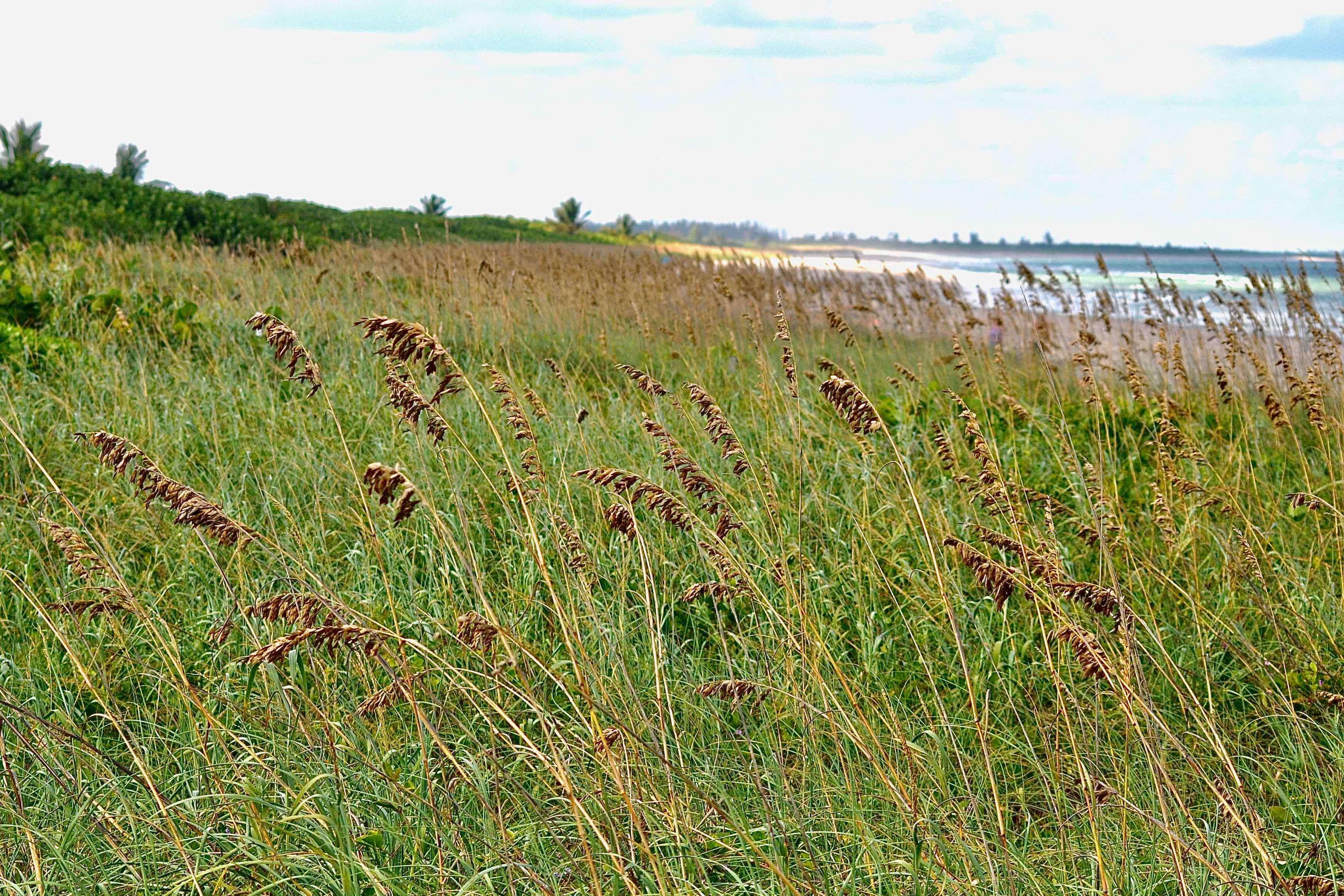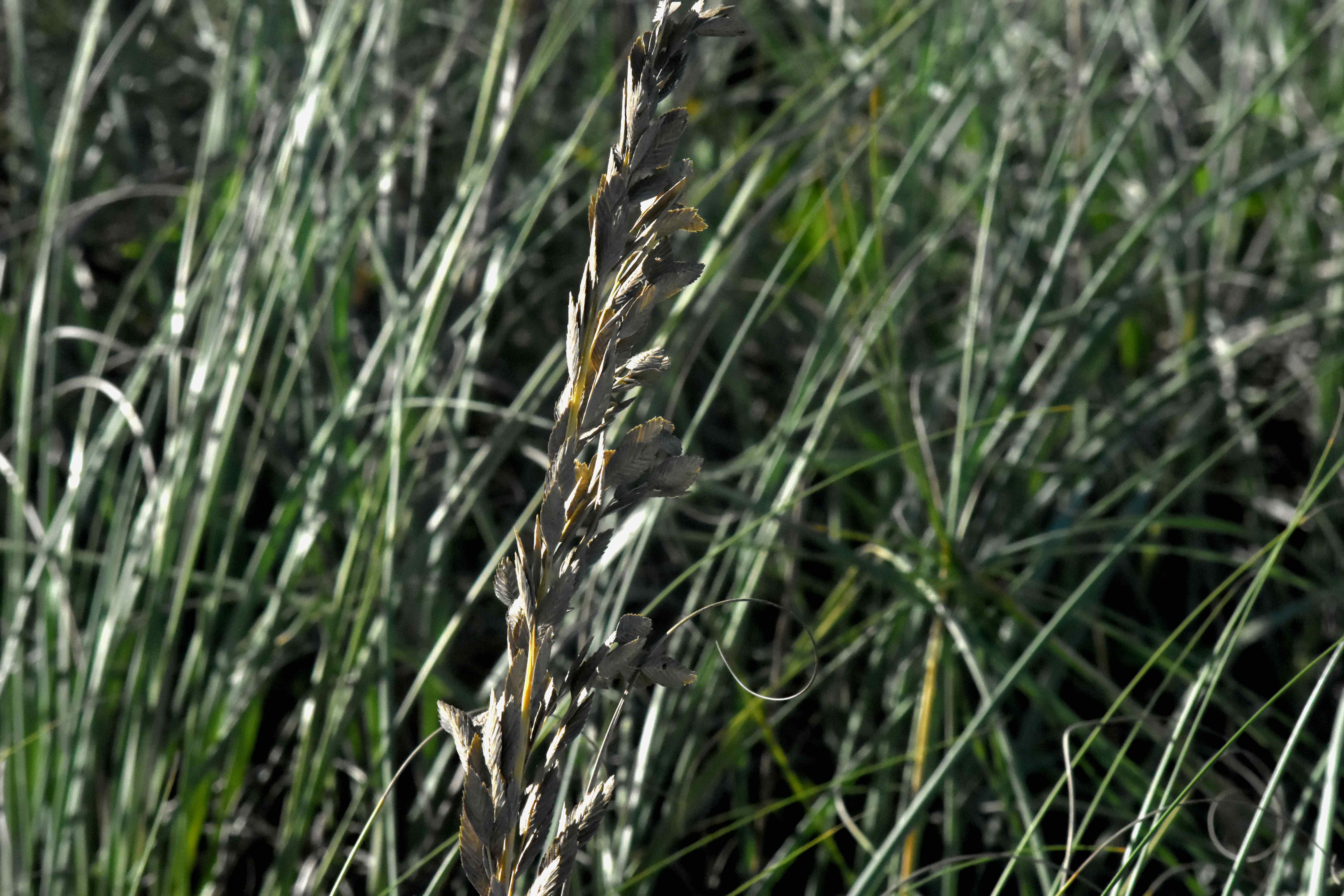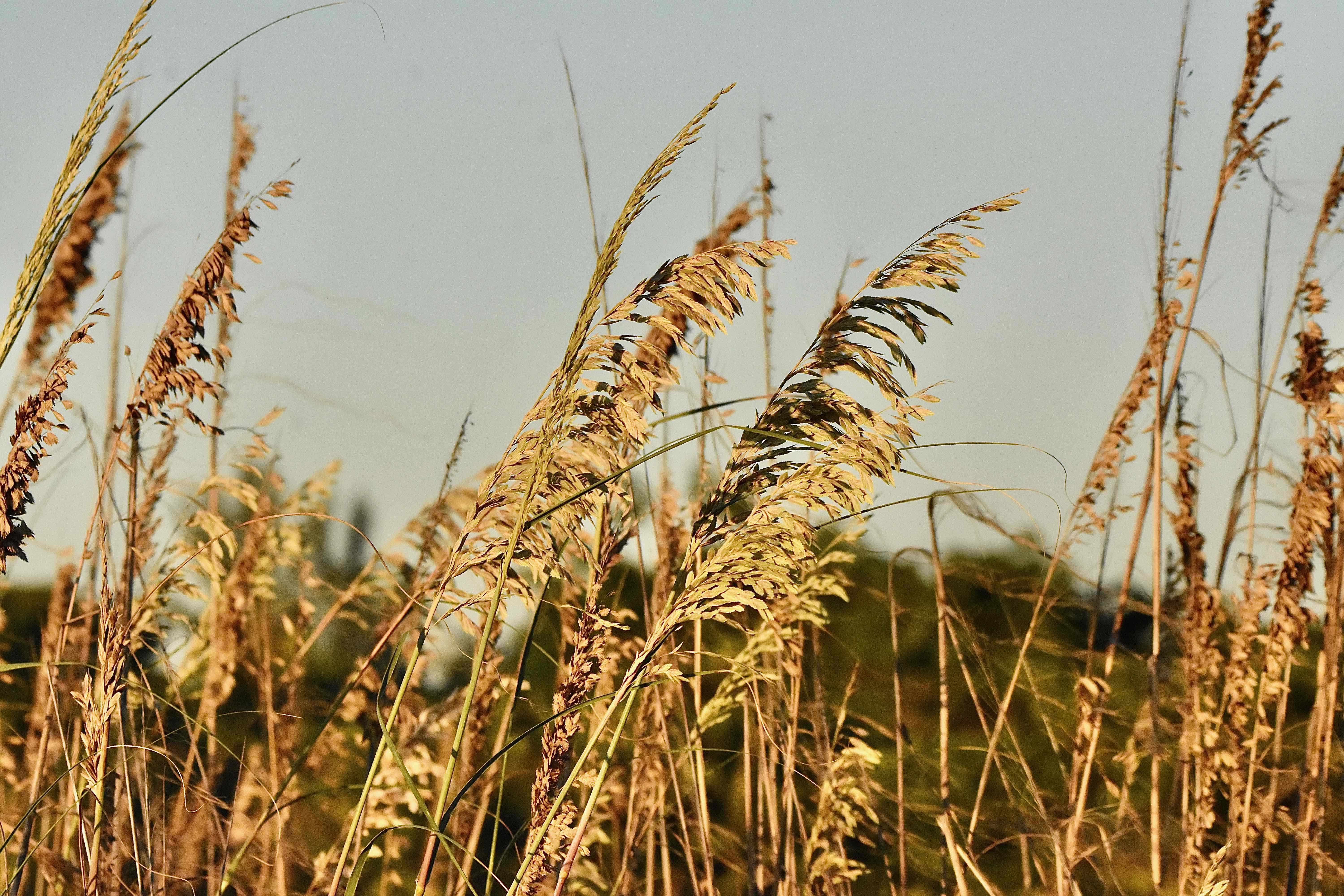
Sea oats, photographed at Bowman's Beach, Sanibel, Lee County, in October 2016.
Perhaps no plant announces that you're at the beach quite like sea oats, Uniola paniculata. It is probably the most iconic of all dune plants, and a vital one at that.
Beach fronts and barrier islands on the Atlantic coast from North Carolina to Florida and on the Gulf coast from Florida to Texas were once covered with sea oats. Now, not so much, although It's still quite common.
In fact, sea oats have become a protected species, mainly because of their importance to beach ecology. They do not appear on any state or federal list of endangered or threatened plants, but gathering sea oat seeds from public lands is against the law in many states where the plant is found, including Florida. It is considered a primary beach stabilizer because of its massive root system. Sea oats are also important both as a source of food and habitat for birds, small mammals and insects. The seeds are edible either as a cereal or ground into flour, and were likely a source of food for native Americans. Some people in parts of Central America still use sea oats as food.
Sea oats have nodes near the ground that will put out underground stems called rhizomes. These stems creep through the dunes, sending out new plants and forming massive clumps that collect wind-borne sand and soil at the base of the plant, essentially building dunes. Sea oats will grow right up to the high water mark and can become the dominant plant species in an area.
The plant itself grows 5 to 8 feet tall, and blooms spring through summer, producing a large head full of flowered spikelets that turn from green to straw brown as the season progresses. Despite their large size, they produce relatively few seeds.
Wind is the primary pollinator, but the main way the plant reproduces is through those rhizomes sending off new shoots rather than by seed.
It is an incredibly tough plant, tolerant of drought, salt and heat. However, it doesn't like to be flooded for any duration.
Sea oats are cultivated and commercially sold, primarily for restorations. Although it is illegal to gather sea oat seeds, individuals can buy seed from licensed nurseries and grow it on their land. It can become invasive, but a few precautions can keep the plant in its place. Decorators use the seed heads as an accent in dried bouquets.
Sea oats is a member of Poaceae, a family of grasses. Other spellings of its common name include sea-oats and seaoats.
Click on photo for larger image
U.S. Department of Agriculture Distribution Maps
